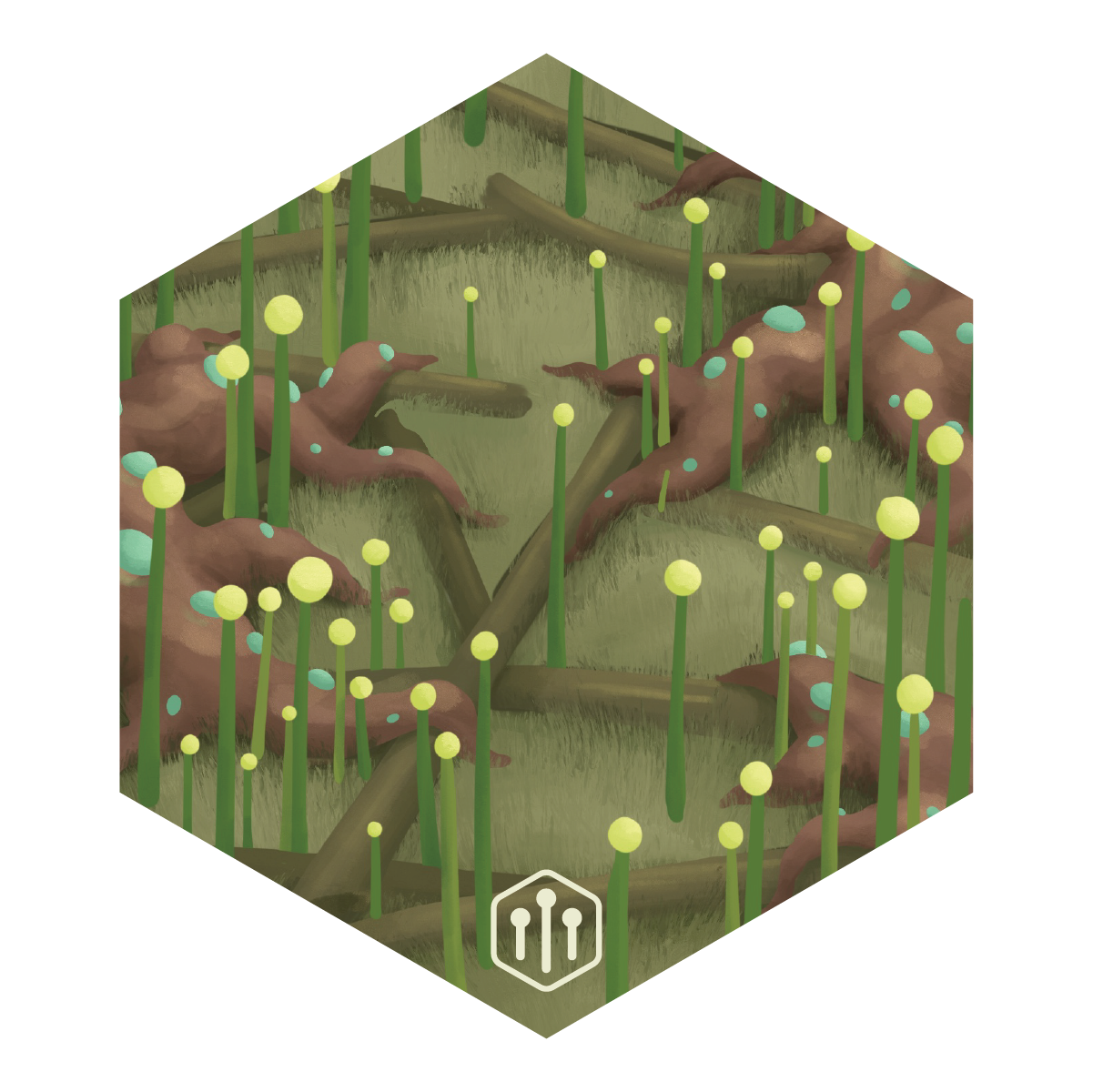It’s crunch time at Far Away Headquarters. We’re rapidly homing in on the game’s final look and feel. The different facets of the game are coming together to create a cohesive experience. Our creature design work, rulebook layout, and equipment redesign have refined the core game into the best version yet. Now, we’re focusing on the missions: the central unit of play in Far Away.
Each session of Far Away begins with selecting a mission. A mission has some lore, some setup, maybe a special rule or two, and a deck of mission cards. These cards are what make each mission special. They reveal the story in digestible chunks, giving new objectives at a steady pace. There are also contingencies; side-paths leading to optional bonus goals, terrifying challenges, or routes that allow the main narrative to non-linearly branch. Contingencies allow a mission with a central goal to cure a disease to be about grappling with the ethics of animal testing, trying to control hive-minded fungi, or accidentally infecting yourself with the virus you’re trying to cure. They give replayability to each mission.
Transforming a story into a deck of cards takes a fair amount of thought and playtesting. We begin with a concept: the reason the Federation Alliance commissioned a pair of explorers to travel to an uncharted world. Five of our missions are backer-driven, so this bit of the puzzle comes from them. Otherwise, we try to think of something that makes logical and thematic sense, while delivering a different challenge. We also want each mission to exercise the mechanics in a different way. There’s only room for one “build a base” mission.
Once there’s an overarching theme, we consider what could go extremely well and what could go terribly wrong for the explorers. Here, in the extremes of the story, is where we discover contingencies. The starting card for these side paths is usually some sort of corner case. It provides a viable path if the game’s random generation doesn’t yield a swamp, or if the players’ zoo has too many alien creatures. This keeps the failure states in an expected range and helps incentivize lucky players to strive for more.
To make missions unique, we often add extra components and additional rules. While some components are effectively the same (all buildings need to be built and do something once constructed), others are only encountered in that mission. These invariably add complexity. We never want to overwhelm players with options; any mission could be their first. To avoid overburdening players, we also use the mission card structure to mete out abilities and items. Cards force us to introduce things one at a time. While we curse the hard limit of text that fits in a box, we recognize it ensures we can’t quickly overcomplicate the game.
With a deck of mission cards (and whatever extra bits needed), we can test a mission. We have a master spreadsheet with every mission and contingency that tracks their playtimes and completion rates. For in-person tests, we take extensive notes during each test around how players react to the mission cards. It’s surprisingly tough to watch people fail a mission. You get invested in their stories. Because of that, it’s hard to decouple their emotions and know where to increase or decrease the challenge. It’s not like there’s a fail-rate metric we’re aiming for; we don’t believe all missions should be won 40% of the time, or something like that. Trying to parse this sort of holistic evaluation is what keeps us up at night.
Recently, we tested the first mission, Outpost, which tasks the players to build a base. Building particular structures triggers contingencies. Originally, we had building the Xenobiology Lab start a side-path to catch some creatures to bring back home. Because players needed to build capture equipment, they never opted to pursue that contingency. It’s wasn’t inherently fun; the only reward was a bonus and a sense of completionism. We changed the contingency’s goal from catching 4 species to eating a piece of meat from 4 species. Suddenly, everyone that starts down that path tries to complete it. It also let us put humor in both the flavor text and the objective itself. Players are meant to sample the local delicacies and describe the taste. Trust us: hearing what people think a Purgo Mus tastes like is always funny.





